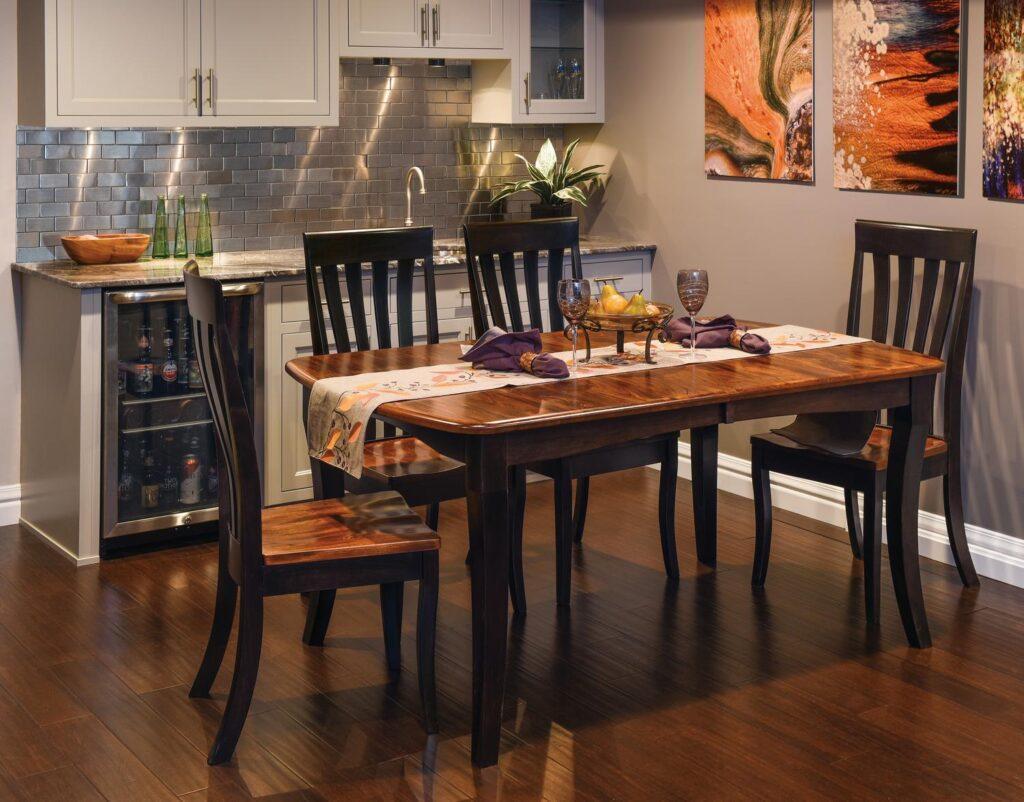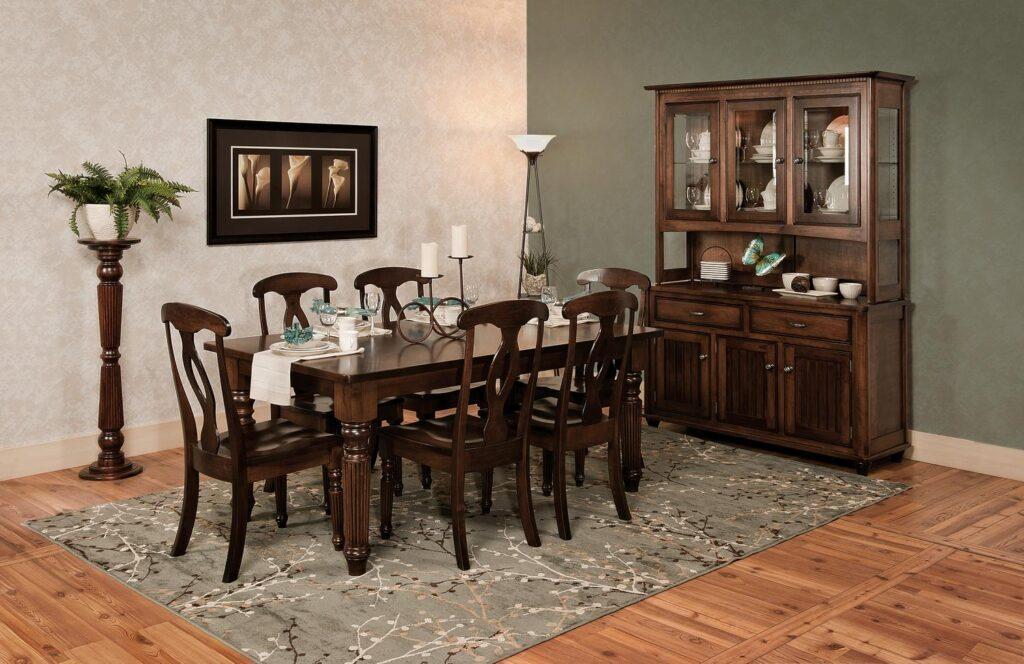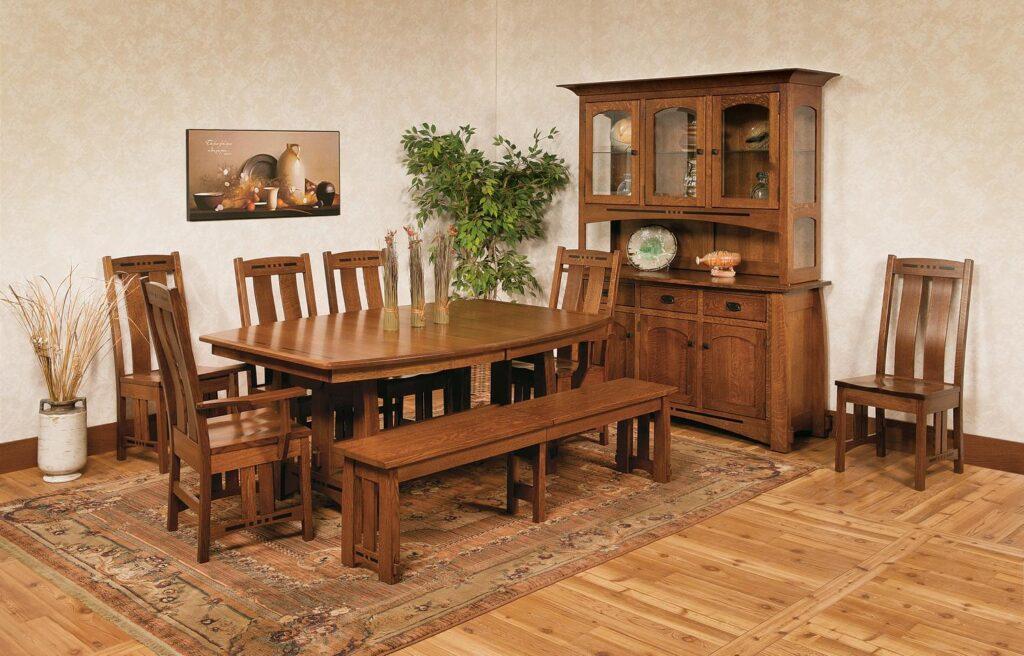It’s easy to protect your hardwood floors from furniture damage. All it takes is a bit of planning. If you are putting in a new hardwood floor, thinking ahead about ways to protect it will pay off.
The harder the wood used for the floor, of course, the more resistant it will be to damage. The hardest commonly available American hardwood is hickory, but most people prefer the grain and color of oak, walnut, maple, ash, or pecan over hickory.
Pay attention to the feet on furniture you are thinking of buying. Wider feet distribute the weight better and make it easier to attach pads. Make sure furniture sits solid, and the feet are level on the bottom. You can touch them up with sandpaper if needed before attaching pads.
Consider who will be using the furniture. Children can knock over a piece of furniture occasionally, which can dent the floor. Go for furniture with a wider, lower profile to make it more stable.
The final option is putting area rugs under your furniture, even under dining room tables and chairs. They look great and do a wonderful job of protecting the floor. They don’t have to be expensive to do a good job of protecting the floor.
Hardwood Protection Starts With Cleanliness
There are some common sense things you can do to make sure your hardwood floor stays in the best possible condition. When moving furniture, pick it up. Never drag it, no matter what type of pads or protectors you use.
The most important thing is to clean your floor often. A dirty floor will not stay free of scratches. Grit can build up on the pads and act like sandpaper when the furniture moves.
Although it is easy to overlook, checking the condition of the pads is vital. Make it part of the cleaning routine to not only clean the pads, but check their condition. Pads in bad condition are a scratch waiting to happen.
Furniture Pads Come in Many Varieties
There are a number of protectors you can buy to attach to furniture feet to protect your hardwood floors. They are commonly called furniture pads, chair glides, slides, or feet.
Felt pads are a popular option, however there are different types of pads available, including nylon, rubber, leather and carpet. If you use felt, thicker is always better.
There are differences in the way the pads are attached to the furniture feet, and these can make a difference in how well they work. Pads can be glued, or have nails or screws for inserting in the bottom of the feet.
Glue, or peel & stick adhesive, is very common on pads, but is not the best solution for items that get moved a lot, such as chairs. They seem to work their way off, usually sooner than you would think.
Some pads have a round metal fixture that holds a piece of nylon, felt, or carpet. They typically have a nail or screw for inserting into the bottom of the furniture foot. These are a bit more secure, but if not attached tightly, can work loose. This makes the hole in the furniture foot even larger, making it hard to put new pads on. If the furniture leg is narrow enough, these can even split the leg if they get caught on something while being moved.
Some protectors slip over furniture feet. These are very good for furniture that doesn’t move much, such as sofas. Many of these are rubber, which can scuff a finished floor, but are great for sofas and beds which seldom move. Rubber protectors can also help a piece of furniture to keep from sliding around when it is being used.
You can make your own pads out of thick felt, the loop side of velcro, carpet, or leather. Trim to fit, clean the feet, and glue the pads on with hot glue or a good adhesive you trust. Make sure the glue is completely dry before placing the feet on the floor.
We Can Help Protect Your Floors
When you buy furniture from Pumpkin Patch Market, you can be sure that it is constructed to help you maintain your hardwood floors. Level feet, wood sanded smooth, and pieces that sit solid are what you can expect.
If you have questions about protecting your hardwood floors, we will be glad to help you. Call or stop in today!




